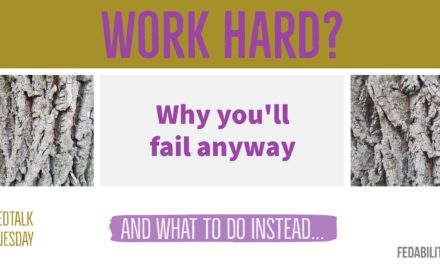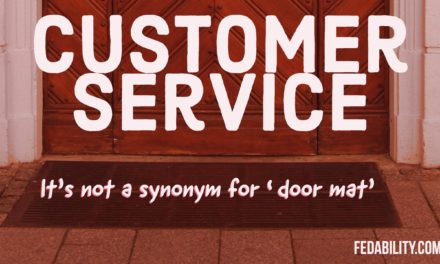Over the last three weeks, I’ve talked about the benefits of a secret methodology that is no secret in IT. It’s the agile methodology. We’ve discussed how agile can help a non-techie get more done through 3 primary features. We’ve talked about how the Kanban board, a tool in agile, can amplify the power of your to-do list. And, finally, we discussed how the Kanban board can be a tool for helping you identify bottlenecks and improving your processes. In this last post about agile, I wanted to offer you a collection of agile TedTalks on the topic to get you thinking even more. While each discusses the benefits of agile, there are lessons learned that we can apply to any change effort.
Why not take a listen to a couple?
Being agile in an un-agile place
In this Ted Talk, Peter Biddle answers the question “How much is too much agile?”. This question is relevant to any change effort. In fact, we could rephrase the question to “How much is too much change?”.
The answer: As much change as possible, right up until the people reject it.
The other take-away from this talk is to be careful about what you call an initiative. The reason being that by calling an initiative by certain phrases or words, people assume they know what you are doing. And, when they assume they know what you are doing – they can tell you why it hasn’t worked in the past. So be forewarned, if you implement some aspects of agile – there will be many strong opinions about the topic. Many who are pro-agile. Many who are anti-agile. I recommend you call you implementation something other than agile.
For more about dealing with change, check out our prior post on tips for personally adapting to change and how you might be responding to change.
Agile leadership – preparing for an unconventional career
In this Ted Talk, Emily Phillips talks about 3 components to being a leader (or anyone really) that can manage unpredictable disruptions in their career and/or their industry. These components include:
- Using an iterative process.
- Cultivating a tribe.
- Getting out of your comfort zone.
She spoke about various careers she had over the years. Starting with being a server at a restaurant. Moving into a role at a modeling agency. Progressing into a management consultancy in IT when she knew nothing about IT. And most recently into a senior role at a financial advisory company.
But here’s what I found the most interesting. She credits her success back to what she learned as a server.
- Figure out what people want. (taking orders at the table)
- Get people what they want, when they want it. (delivering food to the table)
- When things go wrong, you fix it. (taking food back to the kitchen if something isn’t right).
Applying this to her career, she still leans back on her 3 components. She got out of her comfort zone. She asked lots of questions and relied on her tribe to learn about industries she knew nothing about. And accepted that it was an iterative process of figuring out what people want and then getting it for them.
For more about leveraging your tribe or network, check out our prior post on the value of weak connections and boundary spanning as a leader.
Agile programming for your family
In our very first post on agile, I made the claim that the agile methodology can apply to your personal life. But, I didn’t go past that. In this Ted Talk, Bruce Feiler talks about how his family applied the agile methodology to their own lives.
Much like business, parenting typically involves grand proclamations in which the children must execute. Bruce describes it as similar to the waterfall method of software development. The problem, however, is that the team and/or children in Bruce’s example are not empowered. They are not empowered to succeed or fail on their own terms.
The greatest take-away for me from this Ted Talk was Bruce’s third plank of applying agile programming to the family. His planks include:
- Adapt all the time.
- Empower your children.
- Tell your story.
This third plank is one I’ve not considered – for my family or for my teams at work. Bruce says that while we must adapt all the time we must still retain our core values. Or, I think of it in terms of our core function. And, in telling your story we must share the positive moments with each other and others. We must also share the story of the negative moments – and how we overcame them.
Generally, when we talk about our teams (or our children) we talk about their great successes. This implies that there are no failures. Or, when we talk about the failures (which is seldom) we brush it aside quickly and understate it. But, this idea that we instead talk about how the team (or child) overcame the negative moment is in fact quite empowering. There is research with children that talks about how when we tell them how smart they are, the internalize it as a fact. So when they succeed, it’s because they are smart. Failures suggest…well, maybe they aren’t so smart. Conversely, children that are praised by telling them they must have worked very hard – come to believe that success comes from hard work.
It’s hard to increase smartness. It is possible to work harder.
So, when you talk about the negative moments with your family or your teams, remember to talk about what the team did to overcome it.
Challenge for you!
I challenge you to watch some or all of the above Ted Talks. Tell us in the comments what you found to be the greatest take away. Even better – tell us what you plan to try out in your own life.





